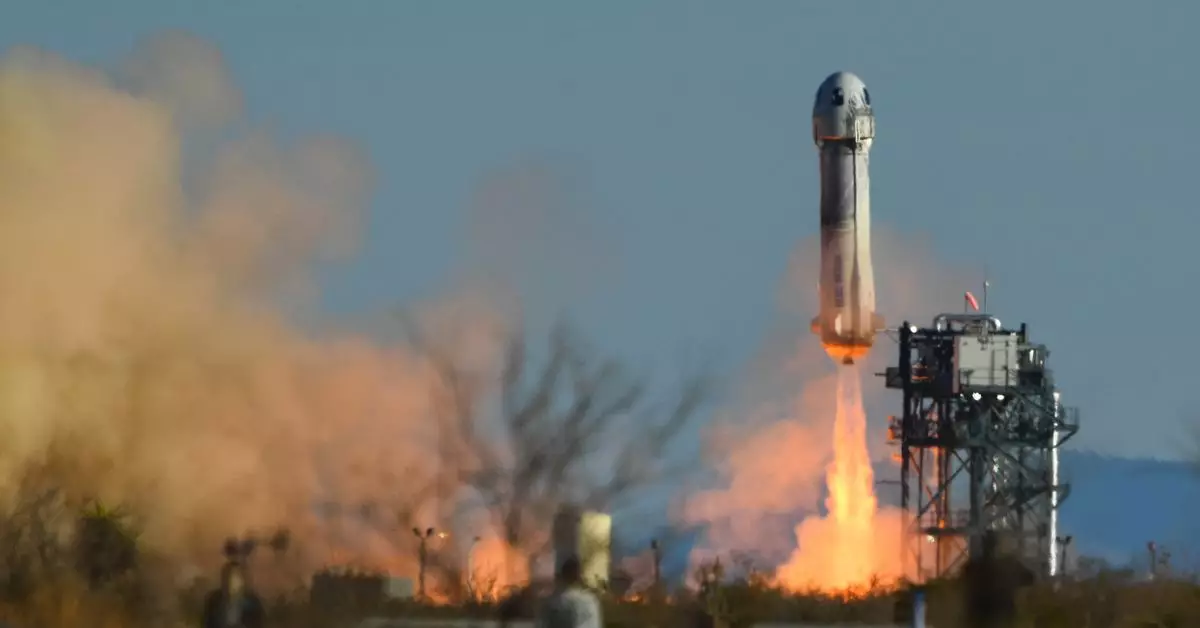Blue Origin is gearing up for a significant milestone in its journey to carve out a more prominent place in the space industry. The upcoming launch of the NS-27 mission is set for Monday at 9 AM ET and represents the inaugural flight of the new RSS Kármán Line crew capsule. This enhanced spacecraft comes with promises of improved reusability and performance, alongside a fresh design intended to accommodate a variety of payloads. The world will be watching as Blue Origin positions itself as a serious contender in an arena increasingly dominated by SpaceX.
The NS-27 mission is more than just a demonstration for the new capsule; it is also a display of the innovative technology that Blue Origin aims to leverage for lunar exploration. Among its 12 payloads, the flight will carry two LIDAR sensors aimed at facilitating the company’s Lunar Permanence program. This initiative seeks to advance the development of lunar landers, crucial for future missions to the Moon. Other intriguing payloads include ultra-wideband proximity sensors, a replica of the black monolith from Stanley Kubrick’s iconic film “2001: A Space Odyssey,” and postcards from students associated with Blue Origin’s Club for the Future. These varied payloads not only showcase Blue Origin’s commitment to education and outreach but also highlight the diverse applications of their technology.
In a era where accessibility and public engagement are paramount, Blue Origin will provide a live stream of the NS-27 launch on its website, starting fifteen minutes before liftoff. This move is strategic, aimed at inviting more people to witness the wonders of space travel and potentially inspiring the next generation of scientists and engineers. By democratizing access to its launches, Blue Origin hopes to cultivate a wider interest in aerospace endeavors.
As Blue Origin prepares to undertake its third New Shepard mission since May, the company is also aligning its sights on future goals to rival established competitors like SpaceX. With the recent appointment of CEO Dave Limp, who previously led Amazon’s hardware division, the company is focused on increasing its production capabilities. Limp’s comments that the company aims to achieve “about an engine a week by the end of the year” underscore an urgent drive for efficiency within the manufacturing process. By the end of 2025, Blue Origin aims to surpass current production timelines, presenting an ambitious challenge in a highly competitive space sector.
Another pivotal component of Blue Origin’s strategy is the anticipated launch of the New Glenn rocket, which has completed crucial preliminary tests. Set to debut in November, the New Glenn is touted for its substantial payload capacity; it can reportedly deliver 45,000 kilograms (over 99,000 pounds) into low Earth orbit—capabilities that rival and, in some cases, exceed those of SpaceX’s Falcon 9. This bold claim positions Blue Origin favorably within the competitive landscape of satellite and payload delivery services.
As Blue Origin prepares for the NS-27 mission, it is not just a step forward in its operational timeline but also a broader move towards establishing itself as a major player in the space race. With innovative technology, a commitment to engaging the public, and a clear focus on production efficiency, Blue Origin’s future endeavors seem poised to make significant waves in the industry. The world will be keenly observing the outcomes of this launch and its ramifications for both the company and the future of space exploration.

